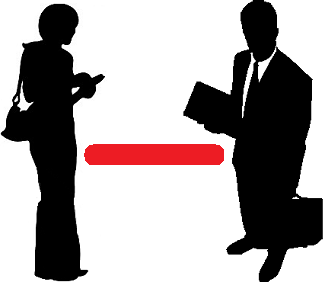






Although the nature of working as a consultant in ergonomics & usability means that professionals will probably work alone, they do sometimes operate with a colleague.
For larger client organizations and collective projects, two to three consultants often collaborate. These small teams can establish ergonomic programs & practices in a client's company; conduct major field research, and draft industry documents for conferences and best practices/guidelines.
"If somebody feels really strongly about something, they’ll email everyone in the team and persuade them: 'We should do it this way, and here’s why'. But we don’t have a formal system for disagreement, like an arbiter or counsellor or foreman. It's pretty much majority rules... if four of us think one way and the fifth person thinks another... sorry, but we’ve got to move forward."
Jeff, BSc Kinesiology, CCPE
As Jeff points out, teamwork in such small groups means that collaboration is highly informal. Although job statuses like senior and junior ergonomist, often dictate that some team members will make more decisions while others focus on data collection and experimental setup. This is especially true of inexperienced vs. experienced consultants, as is common in mentorships.